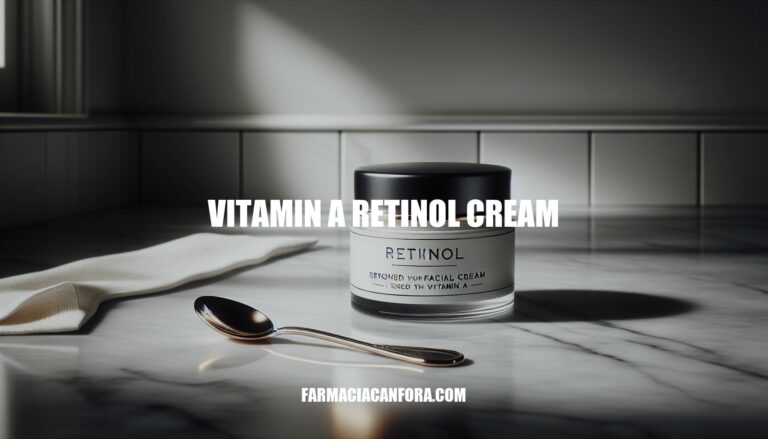


Vitamin A retinol cream is a popular skincare product known for its powerful anti-aging and acne-fighting properties. Derived from vitamin A, retinol helps increase skin cell turnover, boost collagen production, and unclog pores. This makes it effective in reducing fine lines, wrinkles, and acne, giving the skin a smoother and more youthful appearance.
Here are the benefits of using vitamin A retinol cream:
Anti-Aging Properties: Retinol stimulates collagen production, which helps reduce the appearance of fine lines and wrinkles, giving the skin a more youthful look.
Acne Treatment: Retinol helps unclog pores, preventing the formation of blackheads and whiteheads. It also reduces inflammation, which can minimize acne breakouts.
Skin Texture Improvement: By increasing cell turnover, retinol helps exfoliate the skin, leading to a smoother and more even skin texture. It can also fade dark spots and improve skin tone.
Sun Damage Repair: Retinol can help repair sun-damaged skin by promoting the formation of new blood vessels and removing damaged elastin fibers.
Hydration: Retinol helps retain moisture in the skin, preventing dryness and keeping the skin hydrated.
Here’s a step-by-step guide on how to properly apply vitamin A retinol cream:
Following these steps will help you get the most out of your retinol cream while minimizing potential side effects. If you have any specific skin concerns or conditions, it’s always a good idea to consult with a dermatologist.
Using vitamin A retinol cream can lead to several potential side effects, primarily skin irritation. Here are the key points:
By following these steps, you can enjoy the benefits of retinol while minimizing its side effects.
Here are some recommendations for selecting the best vitamin A retinol cream based on your skin type and specific skincare needs:
Sensitive Skin: Look for lower concentrations of retinol (0.1% to 0.3%) and formulations with soothing ingredients like niacinamide or hyaluronic acid. Try The INKEY List SuperSolutions 1% Retinol Serum.
Dry Skin: Choose a retinol cream that includes hydrating ingredients like ceramides or squalaneL’Oréal Triple Power Anti-Aging Moisturizer is a good option.
Oily/Acne-Prone Skin: Opt for a retinol product that also targets acnePaula’s Choice BOOST 1% Retinol Booster is effective for acne and fine lines.
Anti-Aging: For targeting fine lines and wrinkles, consider a higher concentration retinol (0.5% to 1%)Neutrogena Wrinkle Repair Retinol Anti-Wrinkle Face Serum is a popular choice.
Beginner: If you’re new to retinol, start with a gentle formulation to minimize irritationGood Molecules Gentle Retinol Cream is a great starting point.
Always remember to apply retinol at night and use sunscreen during the day, as retinol can make your skin more sensitive to the sun. Consulting with a dermatologist can also help tailor the best product for your specific needs.
Vitamin A retinol cream is a powerful skincare product that offers numerous benefits for anti-aging, acne treatment, skin texture improvement, sun damage repair, and hydration. To get the most out of this product, follow these key points:
Be sure to patch test before full application and avoid mixing retinol with other strong actives like vitamin C or benzoyl peroxide. If you experience any side effects such as skin irritation, increased sensitivity, or initial breakouts, try mitigation strategies like starting slowly, moisturizing, applying at night, using sunscreen, and avoiding other actives on retinol nights.